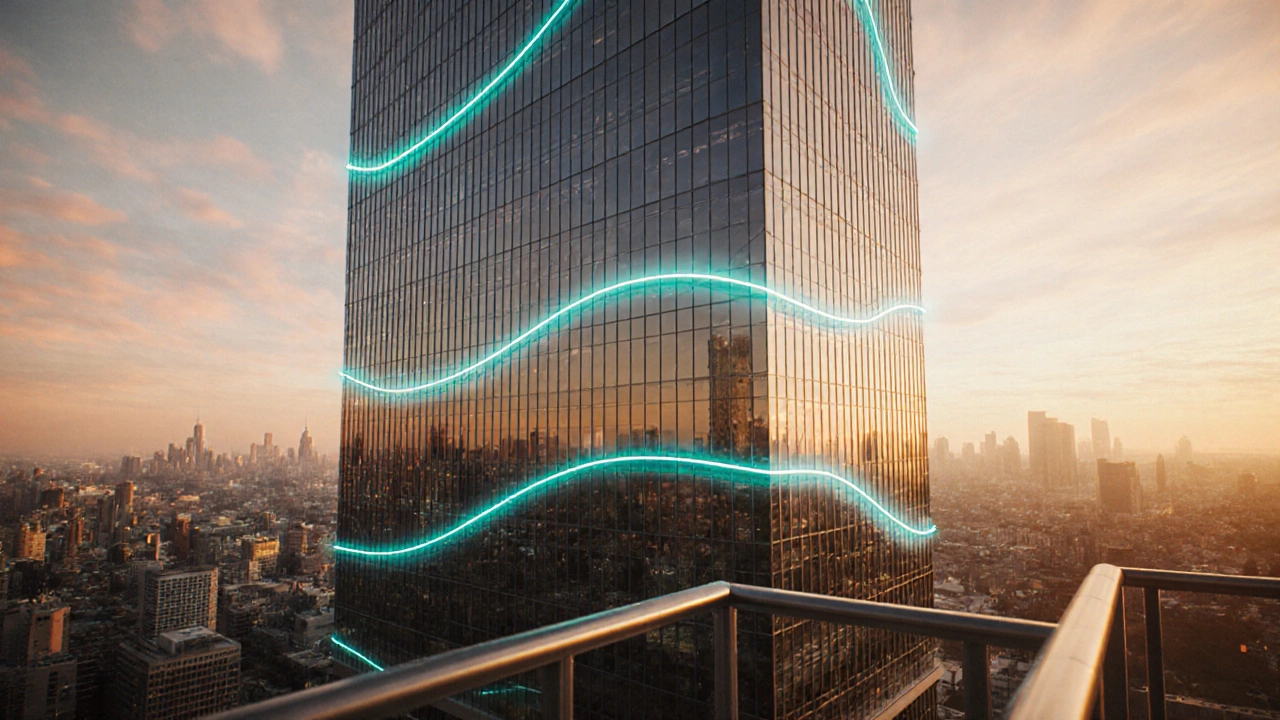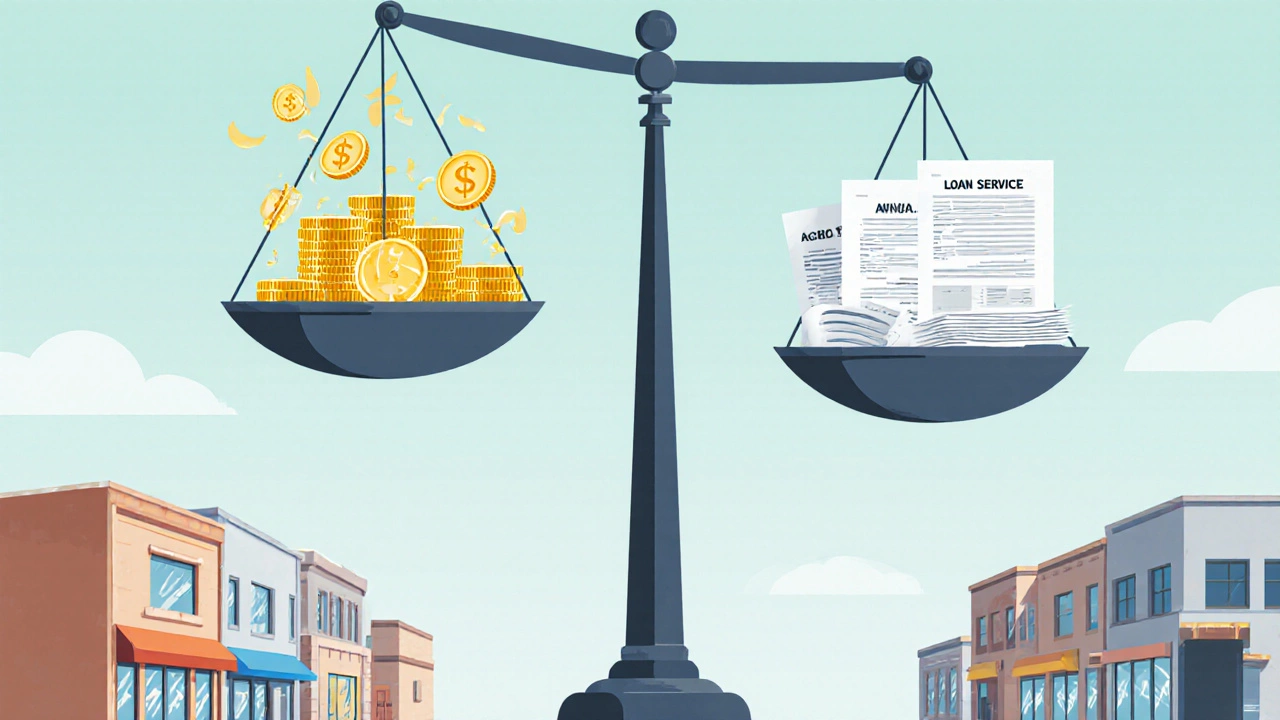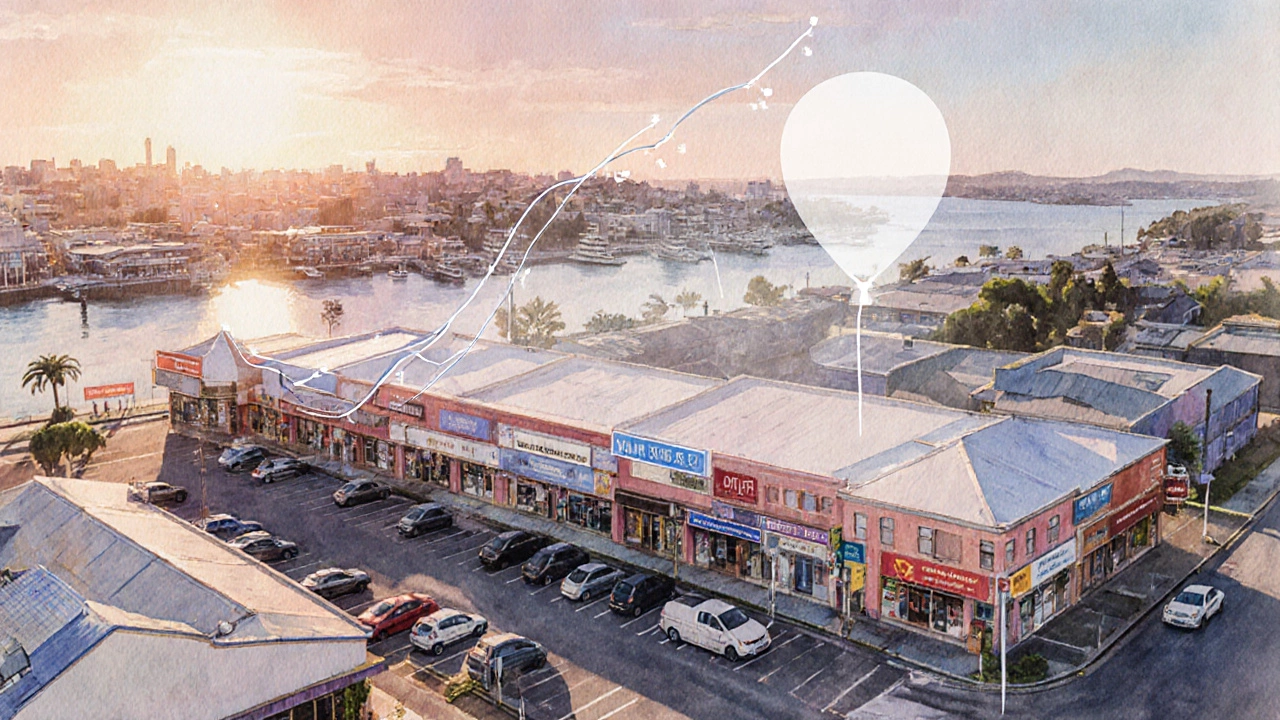Typical Payoff Period for a Commercial Property Loan: How Many Years to Repay?

Commercial Property Loan Payoff Calculator
Loan Parameters
Property Income
Results
Monthly Payment:
Annual Debt Service:
Debt Service Coverage Ratio (DSCR):
Estimated Payoff Period: years
Total Interest Paid:
Note: This calculator assumes fixed interest rates and no refinancing. Actual payoff may vary based on market conditions and your specific loan terms.
Quick Takeaways
- Most commercial property loans are structured for 5-20 years, but actual payoff can stretch to 30 years with refinancing.
- Cash‑flow, interest rate, and loan‑to‑value (LTV) are the three biggest drivers of repayment speed.
- Using a higher Debt Service Coverage Ratio or a shorter amortization schedule can shave years off the schedule.
- Balloon payments and variable‑rate structures add flexibility but also risk extending the timeline.
- In Auckland, a $5 million loan on a retail centre typically sees a 12‑year payoff when the property yields a 7 % cap rate and the loan carries a 4.5 % fixed rate.
When owners ask, “How many years should it take to pay off a commercial property?” the answer isn’t a single number-it’s a range shaped by financing terms, the property’s income, and the investor’s strategy. Below we break down the math, the levers you can pull, and real‑world examples so you can estimate a realistic payoff timeline for your next deal.
Commercial Property Loan is a loan used to purchase or refinance income‑producing real‑estate such as office buildings, retail centers, or warehouses. Lenders design these loans around three core variables: the loan amount, the interest rate, and the amortization schedule. Together they dictate the monthly payment and, ultimately, how long it will take to clear the debt.
1. How Loan Terms Translate Into Years
In New Zealand, commercial lenders most commonly offer two structures:
- Fixed‑rate loans with a set amortization (usually 10‑20 years) and a possible balloon at the end.
- Variable‑rate loans where the payment adjusts with the Official Cash Rate, often paired with a shorter amortization and a refinance option.
The amortization period is the time it would take to repay the loan if you kept the scheduled payments unchanged. A 15‑year amortization on a $3 million loan at 5 % interest yields a monthly payment of about $23,800. If the property’s net operating income (NOI) comfortably covers that amount, the loan could be retired in 15 years-unless you refinance or make extra payments.
2. Cash Flow Fundamentals: The Role of DSCR
lenders look at the Debt Service Coverage Ratio (DSCR) to ensure the property can meet its debt obligations. DSCR is calculated as:
DSCR = Net Operating Income / Annual Debt Service
A DSCR of 1.25 means the property generates 25 % more income than needed to cover the loan payment. Most New Zealand banks require a minimum DSCR of 1.20‑1.30 for commercial properties. The higher the DSCR, the more cushion you have, but it also indicates that the loan term could be shorter because the cash flow supports larger principal reductions.

3. Key Factors That Speed Up or Slow Down Payoff
Three levers have the biggest impact on the actual repayment horizon:
- Interest Rate: Lower rates reduce the interest portion of each payment, allowing more principal to be paid down early.
- Loan‑to‑Value Ratio (LTV): A lower LTV means you borrow less relative to the property’s value, shortening the time needed to reach equity.
- Amortization Schedule: Choosing a shorter amortization (e.g., 10 years instead of 20) forces larger monthly payments, which accelerates principal reduction.
Other considerations include pre‑payment penalties, balloon structures, and the option to refinance at a lower rate after an initial fixed period.
4. Understanding Common Loan Structures
Below is a quick reference for the most common commercial loan products you’ll encounter.
| Interest Rate Type | Typical Term (years) | Typical LTV | Typical DSCR Requirement |
|---|---|---|---|
| Fixed‑Rate | 10‑20 | 60‑70 % | 1.20‑1.30 |
| Variable‑Rate | 5‑15 | 65‑75 % | 1.15‑1.25 |
| Balloon (5‑year) | 5‑10 (initial) then refinance | 70‑80 % | 1.25‑1.35 |
Notice the “Balloon” option often appears as a 5‑year term followed by a refinance. If you can secure a lower rate later, the overall payoff could be faster-even though the formal term is short.

5. Real‑World Example: Auckland Retail Centre
Imagine you’re buying a 4,000 m² retail centre in central Auckland for NZ$8 million. The property produces an NOI of NZ$560,000 per year (a 7 % cap rate). You negotiate a 70 % LTV, meaning a loan of NZ$5.6 million.
Assume a fixed 4.5 % interest rate with a 12‑year amortization. Using a standard loan calculator, the annual debt service works out to roughly NZ$470,000, giving a DSCR of 1.19-just below many banks’ thresholds. To meet a 1.25 DSCR, you might either raise the down‑payment to 30 % (lowering the loan to NZ$5.6 million × 0.85 = NZ$4.76 million) or negotiate a slightly lower rate.
With the adjusted loan (NZ$4.76 million at 4.5 % over 12 years), the annual payment drops to about NZ$400,000, raising DSCR to 1.40. At that pace, the loan would be fully repaid in 12 years, provided the NOI stays stable.
If you opted for a 5‑year balloon at the same rate, you’d pay roughly NZ$320,000 per year for the first five years, then need to refinance the remaining balance (around NZ$3.5 million). Assuming you can refinance at 4 % for another 10 years, the total payoff stretches to about 15 years, but the cash‑flow burden in the early years is lighter.
6. Checklist for Planning Your Payoff Timeline
- Calculate the property’s NOI and confirm a realistic cap rate for the asset class.
- Determine the maximum LTV you can secure without compromising DSCR requirements.
- Run multiple amortization scenarios (10, 15, 20 years) to see how monthly payments affect cash flow.
- Ask the lender about pre‑payment penalties-extra payments can shave years off the schedule.
- Consider a balloon structure only if you have a clear refinance plan.
- Model the impact of interest‑rate changes on a variable‑rate loan over a 5‑year horizon.
- Factor in tax benefits such as interest deductions and depreciation to improve net cash flow.
Putting this checklist into a spreadsheet lets you see, at a glance, whether a 10‑year payoff is realistic or if you should target a 15‑year horizon. The key is to align the loan design with the property’s cash‑flow capacity, not just the lender’s standard terms.
7. Frequently Asked Questions
What is the difference between amortization period and loan term?
The amortization period is the schedule that determines monthly payments and how long it would take to pay off the loan if you never changed the payment amount. The loan term is the length of the contract with the lender; it may end with a balloon payment that requires refinancing.
Can I refinance a commercial loan before the balloon date?
Yes, most lenders allow early refinancing, but you may face pre‑payment penalties or fees. Check the loan agreement for “break‑cost” clauses before committing.
How does a higher DSCR affect the payoff speed?
A higher DSCR means the property generates more income relative to debt service, giving you room to increase monthly payments or make extra principal payments, which directly reduces the number of years needed to retire the loan.
Is a fixed‑rate loan always better for faster payoff?
Not necessarily. Fixed rates provide payment certainty, but a variable‑rate loan can start lower, allowing you to pay down more principal early. The best choice depends on market outlook and your risk tolerance.
What role does the cap rate play in estimating payoff years?
The cap rate links the property’s value to its NOI. A higher cap rate (meaning a lower purchase price for the same income) reduces the loan amount needed, which shortens the repayment period.
In short, there’s no one‑size‑fits‑all answer to “how many years should it take.” By plugging your property’s numbers into the formulas above, you can create a realistic payoff horizon that matches both the lender’s criteria and your investment goals.
When you’re ready to take the next step, start by gathering the property’s financial statements, calculate the NOI, and run a few loan scenarios. The clearer the picture you have now, the fewer surprise years you’ll face later.
commercial property loan is the cornerstone of any commercial real‑estate investment, and understanding its payoff timeline is essential for long‑term success.


